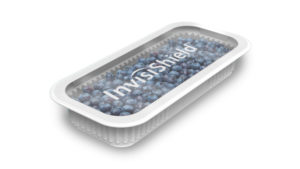Safeguarding produce from viruses through active packing technologies
In the produce sector, assuring freshness and safety has long been a leading concern of processors, distributors and brands. Conventional mitigation strategies focus on wash interventions and food safety plans to mitigate risk of foodborne illness outbreaks.
The success has been limited, with produce-related outbreaks continuing to occur every year.

A review of foodborne disease outbreaks associated with tomatoes points to dozens of events involving a range of pathogens that caused thousands of illnesses and several deaths (“Outbreaks of Foodborne Diseases Associated with Tomatoes,” University of Florida Institute of Food and Agricultural Sciences, May 2012.) Outbreaks related to virus contamination of berries is another high-profile problem — one that has become so pervasive that, in 2019, the FDA announced it would focus on testing frozen berries for several commonly communicated viruses. Two problematic viruses were at the forefront: human norovirus (HNV) and hepatitis A (HAV).
The FDA’s heightened attention to berries stems from a series of outbreaks related to frozen fruits and vegetables, including a major recall in 2016 involving more than 350 products from over 40 brands. After sampling revealed strains of listeria, illnesses were reported across several states. In 2018, 13 consumers were infected with hepatitis A from frozen strawberries and, the following year, hepatitis A was found in blackberries and mixed berries from large-scale suppliers.
To address contamination risks, food processors typically employ a chlorine wash or spray to reduce pathogen growth on produce. While this method has shown broad efficacy against various microorganisms, it is performed prior to the produce being packaged, leaving an opportunity for post-treatment contamination through continued contact with equipment, humans or even the air.
One solution to leverage the anti- pathogenic properties of chlorine in a method that mitigates risk of contamination post-packaging is through chlorine dioxide (ClO2) gas deployed in the headspace of the sealed package. Chlorine dioxide treatment is widely accepted as a method of reducing pathogens and has been used to disinfect drinking water since the 1920s. However, despite its value as a protective agent, implementing this method of pathogen reduction in the food industry presents challenges to both processing safety and a food’s organoleptic qualities.
The large doses of ClO2 required per package, and the need to store high amounts of concentrated gasses on site, can prove dangerous. Additionally, such large doses of the gas can have an adverse effect on organoleptic properties such as taste, texture, scent or appearance. As a result, this solution has historically not advanced beyond the research phase. However, new innovations in active packaging technology have addressed these challenges to bring a safe and effective chlorine dioxide gas solution to the market.
The challenge with produce has been developing a safe, simple means of delivering ClO2 in a way that prevents virus growth while protecting organoleptic properties. Aptar CSP Technologies has made advancements in active material science that make it possible to address those challenges.
A novel antimicrobial delivery system has been developed to deliver a controlled release of ClO2 inside the headspace of sealed produce packages. This solution leverages a proprietary 3-Phase Activ-Polymer platform technology to protect against virus contamination in a manner that is safe, effective and without an organoleptic effect.

The technology, called InvisiShield, is an extruded film attached to the lidding film prior to package sealing. Once sealed, the relative humidity in the packaging headspace triggers a controlled release of ClO2 over the course of approximately 12 hours (Figure 1). By controlling the rate of the antimicrobial treatment’s release, the produce is protected against growth of viruses and other pathogens without any impact to taste, scent or appearance.
As the film releases the ClO2, it breaks down quickly and is not present in the food product, so it doesn’t need to appear on the product’s labeling. ClO2 delivered by the novel active packaging system is not detectable in the final product after 24 hours because it is converted into chloride salts, which are naturally present in the food.
A t-Test conducted by Southwest Research Institute determined there was no significant statistical difference in chloride levels found in commercially available tomatoes compared to those that underwent the antimicrobial treatment. This means the breakdown of the chlorine dioxide gas is consistent with the amount of chloride salts naturally found in the food. These findings confirm that the technology qualifies for “incidental additive” status based on 21 C.F.R. § 101.100(a)(3)(iii) threshold standards, and it also has GRAS (Generally Recognized as Safe) status.
To confirm the antiviral effectiveness and consumer safety of this active packaging solution, Dr. Lee-Ann Jaykus, William Neal Reynolds distinguished professor & NoroCORE scientific director at North Carolina State University, conducted an experiment to explore the technology’s efficacy against a strain of HNV and HAV.
For the study, grape tomatoes and blueberries were placed in separate polypropylene trays and inoculated with substantial amounts of both human norovirus and hepatitis A virus. Trays in the virus-treated group were heat sealed with lidding film that included the antimicrobial treatment. Trays in the untreated control group underwent the same packaging process but without the treatment.
All packages were stored at 7°C (44.6° F) for periods of zero hours (initial reading just after the test began), 24 hours, 48 hours and seven days. At each time point, the product was collected and processed for virus concentration. For grape tomatoes stored in active packaging, human norovirus was reduced by nearly 99.99% and, for berries, reduced by nearly 99.9% (Figure 2). Hepatitis A was reduced by 99% on the grape tomatoes and more than 99.9% on blueberries (Figure 3).
This solution is not limited to protecting fresh produce. As noted previously, in recent years, concerns have arisen regarding virus growth, including strains of human norovirus and hepatitis A, on frozen fruits and vegetables. Testing is currently underway to determine the extent of safeguarding that active packaging systems can have in this area.
While produce safety is obviously of utmost importance, assuring organoleptic properties are maintained is also extremely important to consumers. As such, it is critical to study how consumers view the treated produce and whether they can discern any difference in taste, scent or texture as a result of the antimicrobial treatment.
For sensory analysis, 42 panelists participated in a triangle test using both control tomatoes and those treated with the antimicrobial delivery system. Participants found no significant difference in the tomatoes’ appearance, flavor or texture. Simply put, they could not tell if the tomatoes were treated with the antimicrobial technology.
For blueberries, the results were similar. In a quality test conducted by QFresh Lab, fresh, cultivated blueberries were purchased locally and shelf- life tested side-by-side in modified atmosphere lidding film with and without the antimicrobial packaging technology integrated. Samples were presented to 10 study participants in two different ways: In Test 1, tasters were presented with two control samples and one antimicrobial sample. In Test 2, tasters were presented with two antimicrobial samples and one control. Each sample included five blueberries to taste, and participants were asked to identify the different sample.
In the two triangle tests combined, only seven out of 20 (35%) were able to discern the difference between the berries in the control packaging versus those in the antimicrobial packaging. This is well below the threshold for a significant difference between samples. With 10 panelists at the 5% significance level, 14 out of 20 would need to pick the different sample to conclude the samples were statistically different (Figure 4). Most tasters made a note that they could not discern a difference and took their best guess as to the different sample.
Active material science innovations enable highly engineered, controlled release of ClO2 gas, opening pathways for its widespread deployment in produce packaging headspace without the substance’s commonly perceived drawbacks. Antimicrobial active packaging systems can protect produce against potentially harmful virus growth and dissipate within 24 hours after packaging to a level that cannot be detected on the product.
This packaging system also overcomes another long-standing hurdle: organoleptic properties. The controlled and quickly dissipating nature of ClO2 release in active material science-driven solutions has been shown, through tests conducted both by everyday consumers and discriminating chefs, to have no discernable effect on taste, scent or appearance.
Angela Morgan is director of business development at Aptar Food + Beverage – Food Protection










